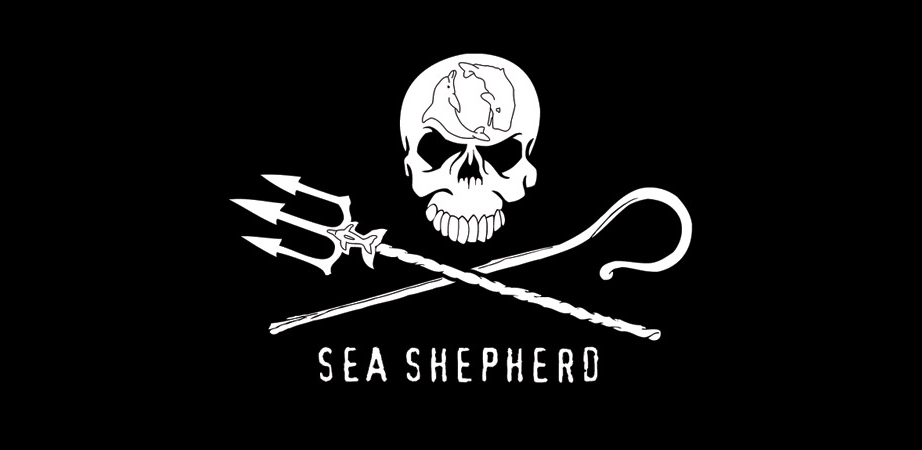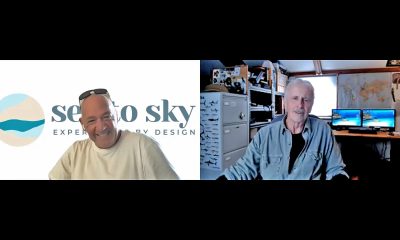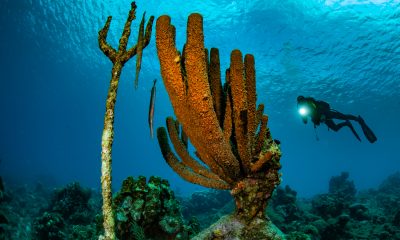Marine Life & Conservation Blogs
Compensation Instead of Confrontation
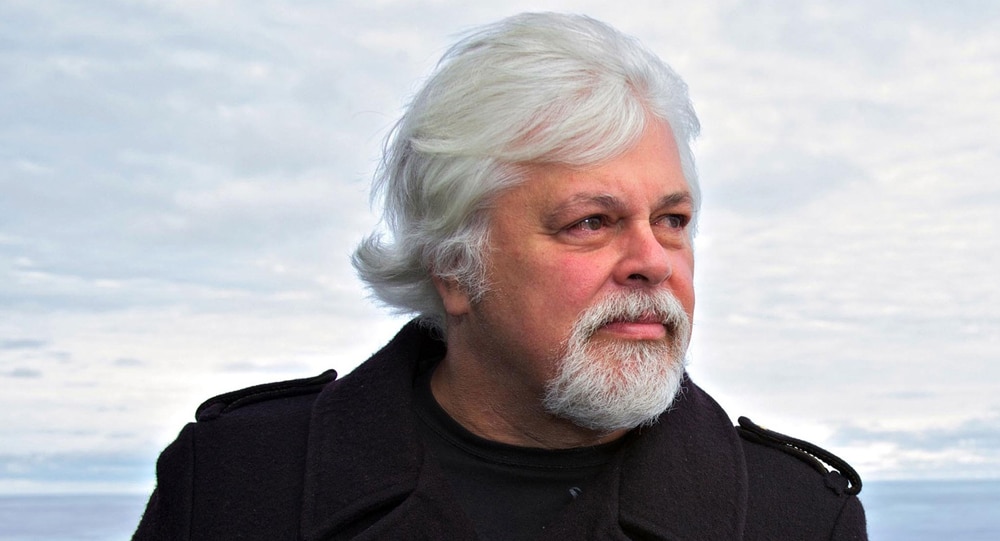
Scubaverse’s Editor at Large, Jeff Goodman, talks to Sea Shepherd’s Paul Watson about their recent controversial announcement offering the Faroe Islands £1,000,000 to stop killing whales.
What Jeff had to say: I first met and worked with Paul in 1988 while making a film for the BBC about the annual slaughter of Pilot Whales and Dolphins in the Faeroe Islands. I joined Paul and the crew of Sea Shepherd in Plymouth and sailed to the islands to try and stop, or at least publicise, the wholesale killing of these cetaceans.
In my sheer naivety I truly believed that if we could show the horrors of this hunt to the world then public opinion and pressure would be brought to bear to end the mass killing. How wrong I was. The resulting film angered a few people and distressed others, but in the end nothing changed. The killing went on and goes on to this day.
However, this does not mean that we should give up trying to end this senseless slaughter, for if we did then we may as well close our minds to all the horrors man inflicts on the world and live our lives in comfortable psychological isolation.
Recently I saw this headline:
‘Sea Shepherd Offers the Faroe Islands One Million Euros to Stop Killing Whales’.
At first I was shocked and then it became clear to me just how committed Paul Watson and Sea Shepherd are to saving our planet’s marine life. It was all at once wonderful and tragic. One of those windows on humanity, paying a rich country not to kill whales in an outdated and unnecessary blood bath.
Combined with all the other immense environmental pressures cetaceans are facing, what is one million Euros compared to the pain, suffering and possible extinction put upon these priceless animals? It seems the supporting membership of Sea Shepherd and the wider public would be willing to donate this amount to give pilot whales and dolphins safe passage past the wealthy Faroe Islands.
I asked Paul to tell me more.
What Paul Watson had to say: After years of confrontations with people who kill seals, dolphins, whales and other wildlife species I have seen that in many cases, the revenues received from donations to oppose exploitation often exceed the revenues realized by those doing the exploitation.
In Mexico for example, Sea Shepherd recently hired fishermen to convert the lead weights we confiscate from the nets of poachers into dive weights. Offering employment is one way to compensate for the loss of fishing revenues due to regulations protecting the endangered Vaquita and Totoaba.
In the Faroe Islands the Grindadrap or slaughter of pilot whales and dolphins is a tradition but the argument from the islanders is that it is free meat and they need the meat despite the high toxicity of that flesh and blubber in the form of methyl-mercury, PCB.s and other heavy metals. We have long argued that there is no economic need to kill whales considering that the Faroe Islands have one of the highest per capita incomes in Europe.
However, some in the Faroes insist it is an economic necessity. If it is money they need, surely the conservation and the animal rights movement can supply the funds. There are far more people supporting the opposition to the killing of whales than people wanting to kill whales. The supporting membership of Sea Shepherd is three to four times the number of the entire population of the Faroe Islands. We could easily raise the required funds for compensation.
For this reason, Sea Shepherd has made an offer to the Faroes of one million Euros payable in yearly instalments of one hundred thousand pounds for each year that no pilot whales or dolphins are killed. The offer comes with a suggestion that the Faroese use the money to build a whale watching industry and/or to promote tourism to the Faroe Islands.
We have not had a reply to our offer but the offer stands should the Faroese decide that there is a greater economic benefit to protecting whales than from destroying them.
For more information about Sea Shepherd visit their website by clicking here.
Marine Life & Conservation Blogs
Creature Feature: Undulate Ray

 In this series, the Shark Trust will be sharing amazing facts about different species of sharks and what you can do to help protect them.
In this series, the Shark Trust will be sharing amazing facts about different species of sharks and what you can do to help protect them.
This month we’re looking at the Undulate Ray. Easily identified by its beautiful, ornate pattern, the Undulate Ray gets its name from the undulating patterns of lines and spots on its dorsal side.
This skate is usually found on sandy or muddy sea floors, down to about 200 m deep, although it is more commonly found shallower. They can grow up to 90 cm total length. Depending on the size of the individual, their diet can range from shrimps to crabs.
Although sometimes called the Undulate Ray, this is actually a species of skate, meaning that, as all true skates do, they lay eggs. The eggs are contained in keratin eggcases – the same material that our hair and nails are made up of! These eggcases are also commonly called mermaid’s purses and can be found washed up on beaches all around the UK. If you find one, be sure to take a picture and upload your find to the Great Eggcase Hunt – the Shark Trust’s flagship citizen science project.
It is worth noting that on the south coasts, these eggcases can be confused with those of the Spotted Ray, especially as they look very similar and the ranges overlap, so we sometimes informally refer to them as ‘Spundulates’.
Scientific Name: Raja undulata
Family: Rajidae
Maximum Size: 90cm (total length)
Diet: shrimps and crabs
Distribution: found around the eastern Atlantic and in the Mediterranean Sea.
Habitat: shelf waters down to 200m deep.
Conservation Status : As a commercially exploited species, the Undulate Ray is a recovering species in some areas. The good thing is that they have some of the most comprehensive management measures of almost any elasmobranch species, with both minimum and maximum landing sizes as well as a closed season. Additionally, targeting is entirely prohibited in some areas. They are also often caught as bycatch in various fisheries – in some areas they can be landed whilst in others they must be discarded.
IUCN Red List Status: Endangered
For more great shark information and conservation visit the Shark Trust Website
Image Credits: Banner – Sheila Openshaw; Illustration – Marc Dando
Blogs
Guarding Against Coral Invaders
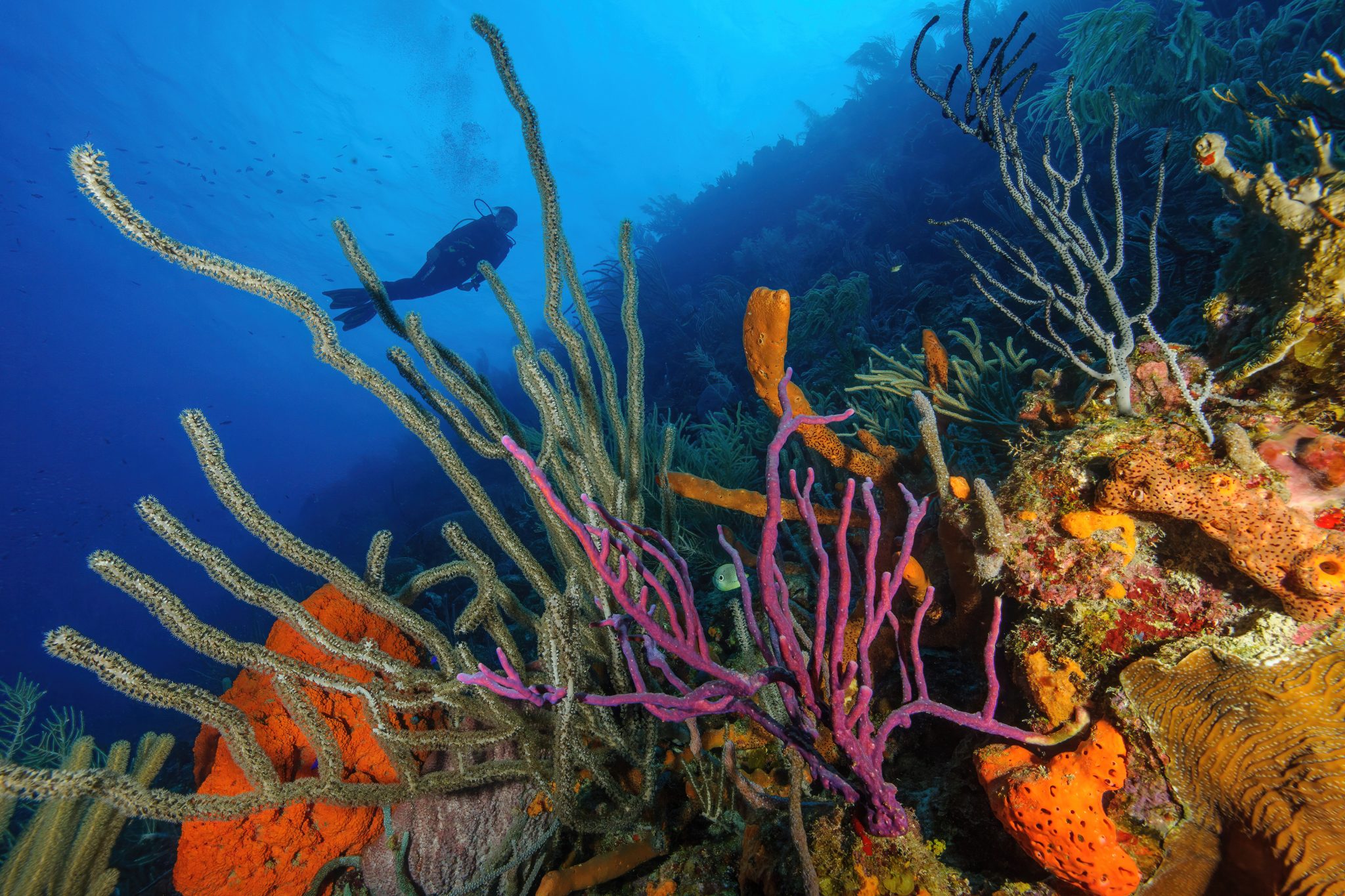
Protecting (Dutch) Caribbean Reefs from Unomia stolonifera
Recent reports highlight the concerning spread of the invasive soft coral, Unomia stolonifera, currently devastating Venezuela’s marine ecosystems and detected in Cuba. With the potential threat of its expansion to the (Dutch) Caribbean islands, urgent action and awareness are essential to safeguard marine biodiversity and local economies from possible catastrophic consequences.
Invasive species are animals or plants from another region of the world that don’t belong in their new environment. These species can have major ecological effects by decimating native flora or fauna. They can also cause large economic losses and impact human health. Invasive species also pose a significant threat to marine ecosystems worldwide, including the Dutch Caribbean. Among these invaders is the octocoral species Unomia stolonifera or “Pulsing Xenia”, originally from the Indo-Pacific. With its rapid growth and lack of natural predators, this species can outcompete native species and disrupt fragile marine habitats such as seagrass beds and coral reefs.
Background
The invasive soft coral U. stolonifera was first identified in 2014, off the coast of Venezuela. It is believed to have been introduced via the illegal aquarium trade. Since this species can reproduce sexually and asexually (or fragment), even small pieces can regenerate to spread. Once introduced it quickly took over shallow reefs and hard substrate at depths of 0-50 meters, outcompeting local corals and seagrass for space. Follow on surveys found that this coral species exhibited average percentage cover as high as 80%, vastly outcompeting native corals. In highly colonized areas, fish are disappearing due to loss of habitats.
In 2022, during a survey conducted in Cuba by the University of Havana, an unknown octocoral was discovered which was later identified as the invasive Unomia stolonifera. It is suspected that the coral larvae arrived in ballast water from fossil fuel ships originating from Venezuela, as nearby sites adjacent to Venezuelan ports have been heavily affected by the invasion.
How to help
Prevention through continuous monitoring, particularly in high-risk areas such as marine harbors and oil facilities, is paramount. Early detection plays a pivotal role in mitigating the threat posed by Unomia stolonifera.
The public’s involvement and awareness are also vital. Local communities, recreational divers, tourists, and all stakeholders are urged to participate in early detection efforts by reporting sightings (photo, location and date) of this invasive coral to their respective Protected Area Management Organization (PMO’s)- the Fundacion Parke Nacional Aruba (FPNA), STINAPA Bonaire, CARMABI Curaçao , Saba Conservation Foundation (SCF), Nature Foundation St. Maarten (NFSXM) and St. Eustatius National Parks (STENAPA). If an invaded area is confirmed, follow the recommendations by the local PMO’s.
Keys to Success
Despite the challenges, early detection is key to mitigating the threat posed by Unomia stolonifera. With continued vigilance, research, and community engagement, there is hope for containing this potential issue before it becomes a major threat.
About the DCNA
The Dutch Caribbean Nature Alliance (DCNA) supports (science) communication and outreach in the Dutch Caribbean region by making nature related (scientific) information more widely available through amongst others the Dutch Caribbean Biodiversity Database, DCNA’s news platform BioNews and through the press. This article contains the results from several scientific studies but the studies themselves are not DCNA studies. No rights can be derived from the content. DCNA is not liable for the content and the in(direct) impacts resulting from publishing this article.
-

 News3 months ago
News3 months agoHone your underwater photography skills with Alphamarine Photography at Red Sea Diving Safari in March
-

 News2 months ago
News2 months agoCapturing Critters in Lembeh Underwater Photography Workshop 2024: Event Roundup
-

 Marine Life & Conservation Blogs2 months ago
Marine Life & Conservation Blogs2 months agoCreature Feature: Swell Sharks
-

 Blogs1 month ago
Blogs1 month agoMurex Resorts: Passport to Paradise!
-

 Gear News3 months ago
Gear News3 months agoBare X-Mission Drysuit: Ideal for Both Technical and Recreational Divers
-

 Blogs2 months ago
Blogs2 months agoDiver Discovering Whale Skeletons Beneath Ice Judged World’s Best Underwater Photograph
-

 Gear Reviews2 months ago
Gear Reviews2 months agoGear Review: Oceanic+ Dive Housing for iPhone
-
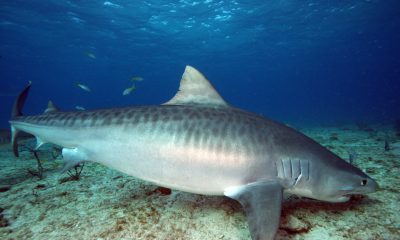
 Blogs3 months ago
Blogs3 months agoThe Thrilling Encounter with Tiger Sharks at Beqa Lagoon’s ‘The Colosseum’ with Coral Coast Divers


